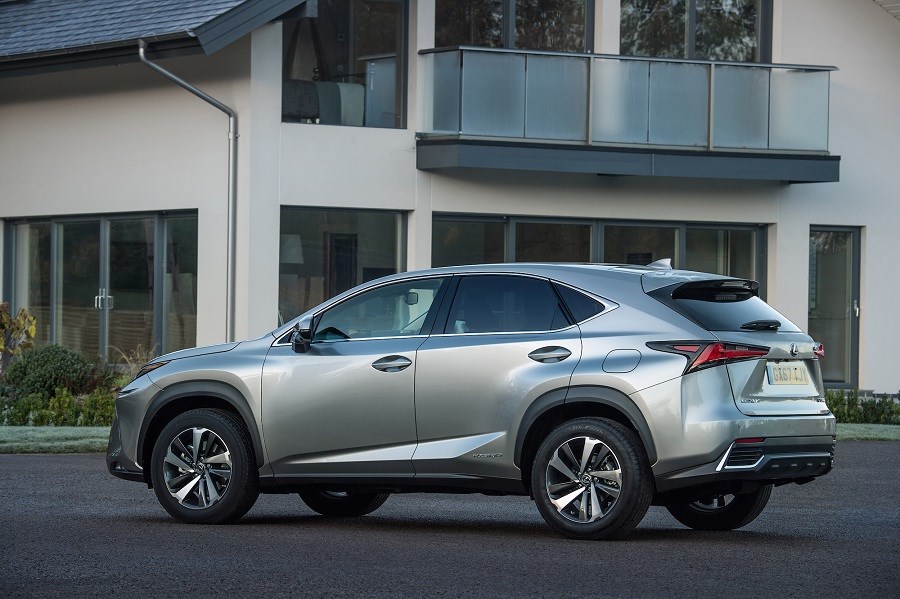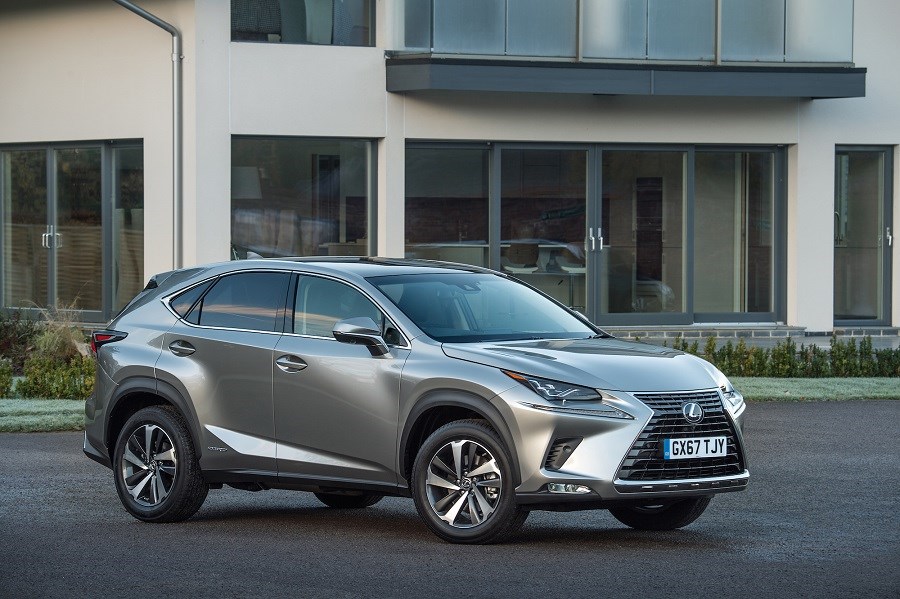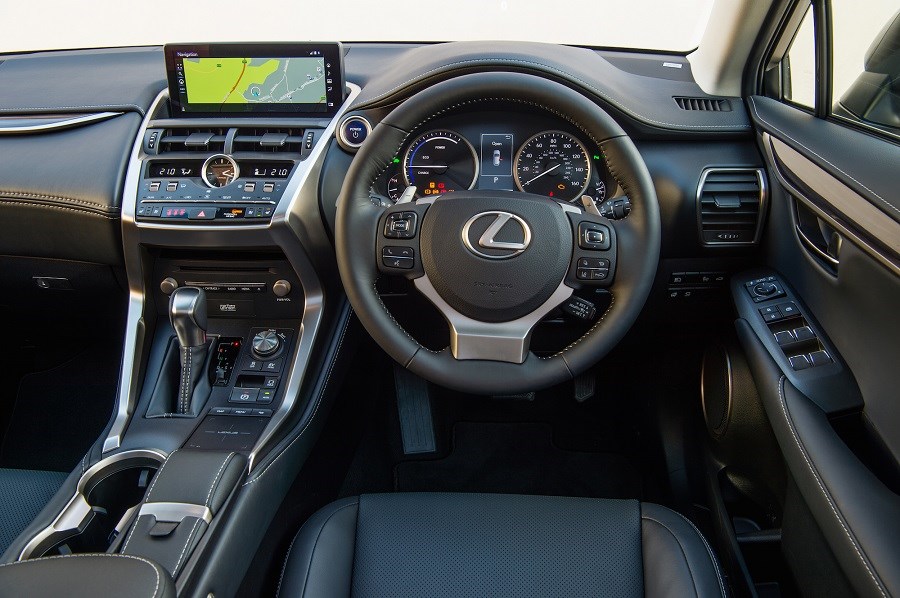Latest Model
To describe the latest NX as a facelift is perhaps going a step too far, as it looks identical to its predecessor, with most of the changes being underneath the surface or on the interior.
Unveiled at the 2017 Frankfurt Motor Show, the updated NX features a redesigned grille, a revised front bumper and new adaptive LED lights, while at the rear new light clusters feature alongside fresh alloy wheel designs.
The most notable change on the interior is a larger touchscreen which has been increased from seven to 10 inches. Various other elements of the interior were also moved around in a bid to give the NX a more user-friendly feel.
The model also gained Lexus Safety System+ — a pack that includes a number of safety assistance features such as autonomous emergency braking, adaptive cruise control and lane departure warning.
Finally, the petrol engine was renamed from NX 200 to NX 300.
Value for money
In the premium mid-size crossover class, the NX manages to sit underneath many of its key rivals, notably the Mercedes GLC, Jaguar F-Pace and Volvo XC60.
New prices start from £34,490, which is a couple of thousands of pounds less than many of the German offerings. However, this doesn’t compromise the standard equipment, as the NX gets a lot of kit included for the price including front electrically-operated and heated seats, LED headlights, 18-inch alloy wheels and satellite navigation to name but a few. As expected, top spec models aren’t quite as reasonable as they start to approach the £50,000 marker.
On the used market, NX’s start from £17,000 which can bag an early 2015 car with round 80,000 miles on the clock. Expect to pay around £20,000 for a well-specced NX with 50,000 miles on the clock.
The savings on nearly-new models aren’t quite as significant, although you can expect to save £4,000 on a six-month-old example with under 10,000 miles on the clock.
Looks and image
Lexus styling is something that you will either love or hate. The manufacturer utilises a huge metal grille, and while we think it looks sharp and has improved the look of the NX, design is always subjective. Both Sport and F-Sport models are particularly stylish, with each coming with unique design cues. Bold crease lines down the side of the NX also give the model a unique road presence, which is arguably more distinctive than other crossovers in the range.
The sharp styling doesn’t quite extend to the interior, which is not as racy as the exterior. That said, if you’re looking for a comfortable and luxurious interior then the Lexus is a fantastic choice. Everything is well-built and feels worthy of the NX’s price, although it perhaps doesn’t have quite the same quality as a BMW or Mercedes, nor would you expect it to given the significantly reduced price tag. The larger touchscreen is certainly an improvement over the last car, although it can be a fiddly system to operate.
Compared to rivals such as the BMW X3 and Jaguar F-Pace, the NX is a disappointing car to drive. There’s very little feedback from the steering and there’s next to no driving enjoyment, although for those simply wanting a comfortable motorway cruiser, it’s perfectly suited. The suspension setup is disappointing around town and it just can’t soak up potholes and bumps in the roads in a manner you’d expect from a big crossover. And while F-Sport models look incredibly stylish, the sportier suspension setup offered by the trim only makes this ride quality worse. It’s a bit of a shame as past Lexus models have been known for their superb ride quality. On the plus side, there’s little lean in the corners, and the hybrid powertrain offers a relaxed driving experience most of the time.




